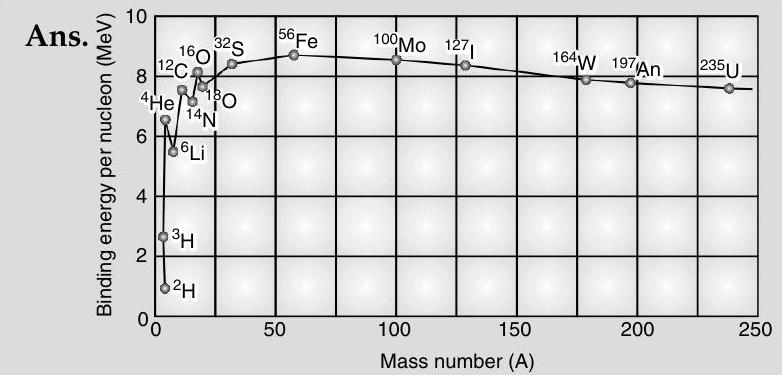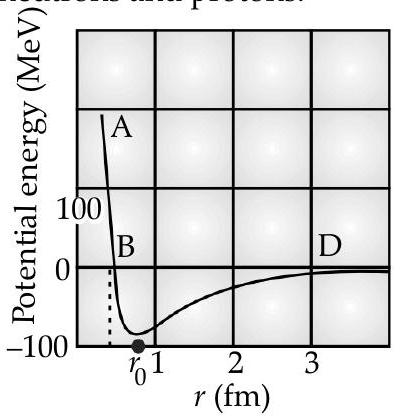Question: Q. 5. Draw a plot of

From the above graph, its clear that binding energy per nucleon is low for very light nuclei ( approximate below 20 mass number), if two very light nuclei
[CBSE Marking Scheme 2014]
Answering Tip
- Remember
Q. 6. Show that the density of nucleus over a wide range of nuclei is constant and independent of mass number. U[Delhi I, II, III 2013; Delhi I, II, III 2012]
Show Answer
Solution:
Ans. We have
Hence
(Here
[CBSE Marking Scheme 2013]
Detailed Answer :
mass of nucleus
If
Putting the value of
We know that
Hence,
Cubing both sides
Or
Hence proved that Nuclear density
(i) The mass of a nucleus in its ground state is always less than the total mass of its constituents neutrons and protons. Explain.
(ii) Plot a graph showing variation of potential energy of a pair of nucleons as a function of their separation.
U] + R [OD 2009]
Ans. (i) Protons and neutrons have to come very near to bind together and form a nucleus. This distance is of the order of
(ii)

Commonly Made Error
- Most of the students couldn’t write the correct reasoning.
- They wrote that mass of a nucleus is always less than the total mass of its constituents and energy is released if it is converted to a nucleus of high






